Good Luck Animals: A Guide to Fortunate Fauna
This guide introduces the concept of good luck animals, creatures that are believed to bring good fortune and protect against bad luck. More than just animals, they hold significant cultural and symbolic importance, representing the hopes, history, and wisdom of various communities. Read our review and choose your lucky animal!
What is a Good Luck Animal?
A good luck animal stands at the crossroads of folklore and reality, a creature believed to bring fortune and ward off misfortune. Far beyond their biological roles, these animals carry significant cultural symbolism, embodying the aspirations, heritage, and collective wisdom of communities. These aren’t just any animals; they are those selected through generations for their unique characteristics or behaviors that seem to resonate with luck, prosperity, or protection. Whether it’s the steadfast loyalty of a dog, the enduring resilience of a tortoise, or the mysterious allure of a fox, each good luck animal brings its own flavor of fortune to the table. This concept underscores a universal human tendency to find connections and seek meaning in the natural world, integrating these animals into rituals, art, and stories as symbols of luck and prosperity that bridge the mundane with the mystical.
History of Good Luck Animals
The history of good luck animals spans across various civilizations, each attributing magical qualities to different creatures based on unique cultural insights and observations. In ancient Egypt, cats were not just pets but divine protectors; killing one, even accidentally, could result in the death penalty. This reverence was rooted in the cat’s ability to control pests and protect food stores, crucial for survival in a granary-rich society. Moving to the Norse traditions, the rabbit’s foot was considered lucky due to its association with the fertility goddess Freya, linking the animal to fertility, abundance, and prosperity. In contrast, the Chinese zodiac system, a sophisticated astrological map over two millennia old, assigns specific animals to different years, with each creature bestowing its characteristics on those born in its year. This system reflects the deep integration of animal symbolism in human fate and fortune. Additionally, in Native American cultures, animal totems represent more than luck; they guide, protect, and teach, embodying the deeply interconnected nature of life. These facts highlight not just a universal tendency to seek symbols of luck in the animal kingdom but also the rich, complex tapestry of meanings and beliefs that different societies have woven around these creatures.
Animals Universally Associated with Luck
Across the globe, certain animals have universally emerged as symbols of luck, each backed by fascinating facts that underscore their esteemed status.
These animals are not just cultural artifacts; they are backed by fascinating stories and facts that have bolstered their status as global emblems of good luck.
Elephants, for example, are not just admired for their grandeur and intelligence but are also considered powerful symbols of luck in numerous cultures, partly due to their long lifespans and strong social bonds, symbolizing longevity and loyalty. The practice of keeping elephant statues, especially those with trunks pointing upwards, in homes and businesses, is believed to attract good luck and prosperity.

Rabbits are another creature celebrated across various traditions, primarily due to their high reproductive rate. This attribute has made them symbols of fertility, abundance, and the quick manifestation of success. The Easter Bunny, a symbol of new life celebrated in the spring, stems from these ancient associations of rabbits with prolificacy and renewal.

Fish, particularly koi, hold significant cultural importance in East Asia, embodying perseverance and strength. The legend of the koi fish swimming upstream and transforming into a dragon represents overcoming adversity, hence why koi are often associated with luck in career advancement and academic achievement. Koi ponds are common in Asian businesses and homes as a magnet for good fortune.

These animals, revered across the globe, not only enrich the cultural landscapes of their respective origins but also offer insights into how diverse societies interpret and value the natural world’s influence on human fortune.
European Good Luck Animals
If you are interested in which animal symbolizes good luck in Europe, here are the most famous of them.
The Ladybug, beyond its pest control prowess, is a beloved symbol of good fortune across Europe. Interestingly, the number of spots on its back is said to predict how many months of good luck you’ll have. In some cultures, if a ladybug lands on you and then flies away, it’s considered to be gathering more luck to bring back to you.
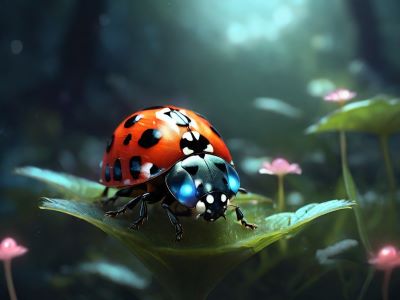
Storks are admired for more than their majestic presence; they’re linked with fertility and domestic happiness. This belief possibly stems from the stork’s habit of returning to the same nest every year, often on rooftops, symbolizing stability and loyalty. Moreover, in some European countries, protecting a stork’s nest is believed to shield the house from lightning.
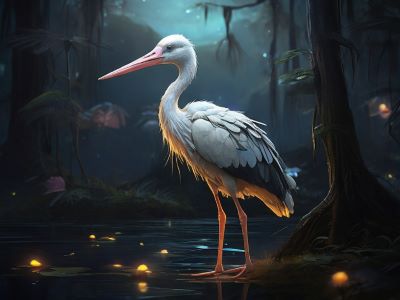
Foxes in European lore represent cunning and adaptability. What’s fascinating is their incredible ability to use the Earth’s magnetic field to hunt. This magnetic sense helps them measure distance and direction when pouncing on prey under the snow, a skill that has captivated human imagination and associated them with having the wisdom to navigate through challenges.
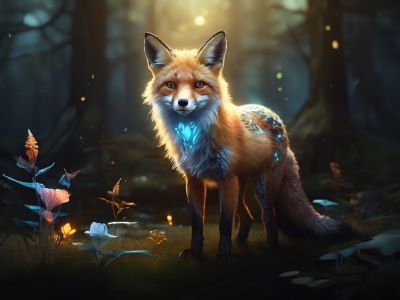
The Owl’s association with wisdom has roots in ancient Greece, linked to Athena, the goddess of wisdom. Owls have an extraordinary ability to see in the dark and rotate their heads up to 270 degrees, qualities that metaphorically suggest the ability to uncover hidden truths and see what others cannot. Owls are not just symbols of wisdom but also guardians against misfortune.
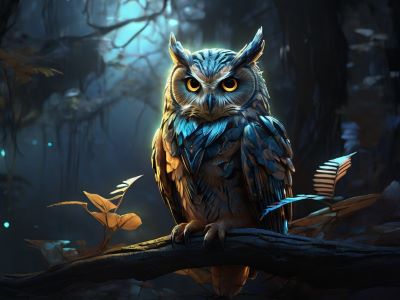
Chinese Lucky Animals
In the vast cultural heritage of China, certain animals are celebrated not merely for their physical attributes but for the profound symbolic meanings and fortunes they symbolize.
Dragon: The Chinese dragon stands apart from its Western counterparts by embodying benevolence, wisdom, and prosperity rather than fear. Revered as a symbol of power and authority, it is believed to have dominion over water bodies and weather, influencing agriculture and the well-being of the empire. Historically, emperors aligned themselves with dragon imagery to assert divine authority and connection to celestial powers.
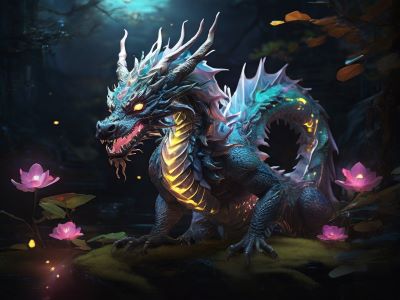
Phoenix: As a magnificent bird that is said to rise from its ashes, the phoenix symbolizes rebirth, peace, and prosperity. It is often depicted alongside the dragon to denote a harmonious yin and yang balance, representing the perfect union or marital fidelity. The mythical bird is celebrated for its ability to emerge stronger from trials and tribulations, serving as an emblem of resilience.
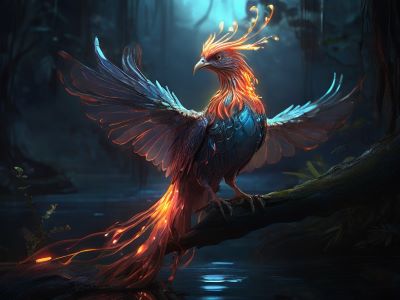
Tortoise: Esteemed for its incredible longevity and stability, the tortoise is one of the revered four sacred animals of ancient China. It represents endurance, longevity, and protection, believed to bear the secrets of heaven and earth on its shell. Tortoise shells were used by ancient sages for divination, serving as a bridge between the mortal realm and the divine.

Bat: Unique among good luck symbols, the bat is celebrated for its name’s phonetic resemblance to the word for good fortune in Mandarin. This serendipitous linguistic coincidence elevates the bat to a symbol of happiness, prosperity, and the ushering in of good luck. Its depiction in art and decorations is thought to attract favorable energies and blessings.
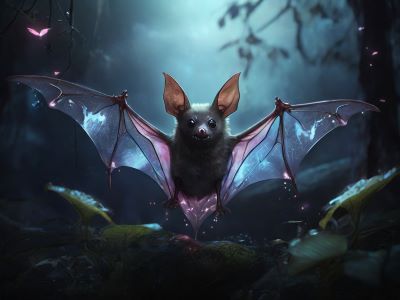
Japanese Lucky Animals
In the enchanting realm of Japanese folklore, beyond the well-known Maneki-neko, whose beckoning paw invites prosperity into homes and businesses, lies a pantheon of creatures each bearing their unique charm.
Koi fish, gliding effortlessly against the flow, stand as symbols of persistence and resolve. Legend has it that a koi ascending the mythical Dragon Gate falls undergoes a magnificent transformation into a dragon, signifying the pinnacle of success and the ability to rise above one’s circumstances.
The Crane, a revered bird within Japanese tradition, is synonymous with longevity and loyalty. Often featured in matrimonial decorations, it heralds a union blessed with endless joy and prosperity.
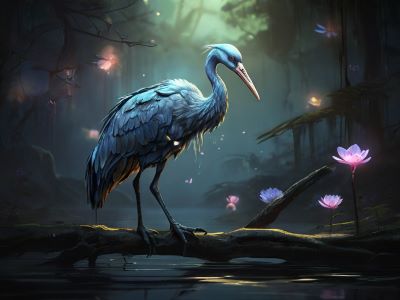
The Frog, known in Japanese as “Kaeru,” benefits from a fortuitous wordplay; its name echoing the term for “return,” hence, it is believed to ensure the safe homecoming of travelers and the resurgence of misplaced wealth.

Likewise, the Owl, or “Fukurou,” is celebrated as a harbinger of good fortune. This association is partly drawn from its name’s vocal resemblance to the concept of luck in Japanese and its esteemed status as a vigilant nocturnal predator, symbolizing wisdom and a shield against adversity.
Indian Good Luck Animals
In India, the intertwining of spirituality and animal symbolism results in an array of good luck animals, each with its own set of intriguing facts that transcend mere folklore.
The Elephant, beyond its majestic appearance, is deeply revered for its intelligence and memory, qualities that contribute to its association with wisdom and the removal of obstacles. This animal’s significance is epitomized by Lord Ganesha, one of the most worshipped deities in Hinduism, who is depicted with an elephant’s head and is believed to bring good luck and prosperity.
The Peacock, India’s national bird, is another symbol of good fortune, but its inclusion in Indian mythology is backed by remarkable biological traits. The peacock’s feathers, known for their vivid colors and eye-spot patterns, are not just a visual marvel; they also play a role in courtship displays, symbolizing the beauty of life and attraction of prosperity. The bird is linked to Saraswati, the goddess of wisdom and learning, and its feathers are considered a sign of good luck, often kept in homes and books.
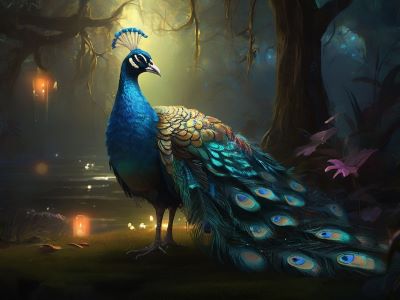
Cows are venerated across India, embodying a level of respect that surpasses that of most other animals due to their life-sustaining milk, often equated with a mother’s nurturing. This reverence is not just cultural but also has practical aspects; cows in India are often seen freely roaming the streets, where they are fed and cared for by the community. This animal’s sacred status is highlighted in religious texts and practices, where its by-products, like milk, ghee, and even dung, are used in various rituals for purification and blessings.
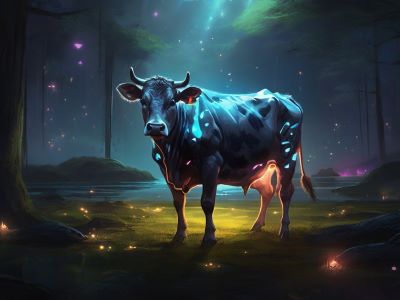
American Good Luck Animals
It’s time to move to America and find out which animal brings good luck there and what it is connected with.
The Bison is an iconic symbol of the American West, representing strength, sustainability, and prosperity. Historically, Native Americans relied on the bison for their survival, using every part of the animal for food, shelter, and tools, embodying a profound respect and a symbiotic relationship with nature. The bison’s near-extinction in the 19th century and subsequent recovery is a powerful story of resilience and conservation, making it a modern emblem of hope and environmental stewardship.
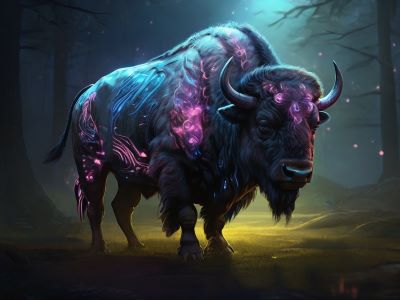
The Hummingbird, a tiny bird known for its dazzling colors and incredible flight capabilities, symbolizes joy, agility, and the enjoyment of life. Hummingbirds can hover in mid-air, fly backwards, and even upside down, a feat unmatched in the animal kingdom. This remarkable agility has made them symbols of flexibility and adaptability. Many Native American tribes see the hummingbird as a symbol of luck in love, and its ability to travel great distances despite its small size inspires people to pursue their dreams, no matter how challenging.
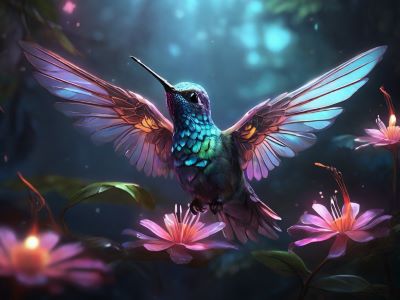
The Bear emerges as a Emblematic of courage, strength, and leadership. In Native American lore, the bear is often seen as a spirit guide, offering protection and wisdom. Its impressive physical prowess and maternal instincts, particularly evident in the protective nature of bear mothers towards their cubs, resonate deeply with themes of bravery and familial bonds. The bear’s hibernation cycle, marked by periods of deep sleep followed by renewal, further symbolizes introspection, transformation, and the cyclical nature of life.

Australian Lucky Animals
In the diverse ecosystems of Australia, a few animals stand out not just for their ecological roles but also for their cultural significance in bringing good luck.
The Kangaroo, Australia’s most recognizable marsupial, is admired not only for its ability to leap great distances but also for its maternal care, as it carries its young in a pouch. This unique feature has made it a symbol of nurturing and progress, inspiring the belief that carrying a kangaroo motif can propel individuals forward in life, both physically and metaphorically.
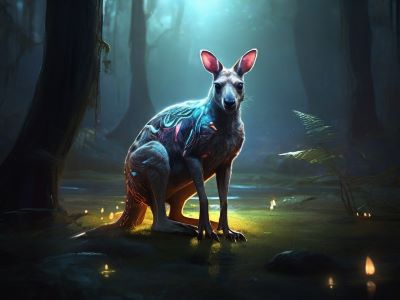
The Wombat, another intriguing animal, is less known internationally but equally cherished. With its sturdy build and nocturnal lifestyle, the wombat represents resilience and the ability to thrive in tough conditions. Its digging habits lead to the creation of complex burrow systems, symbolizing the importance of creating and maintaining safe havens. This has led to the belief that the wombat is a protector of those who are navigating their own personal challenges, offering them the strength to persevere.
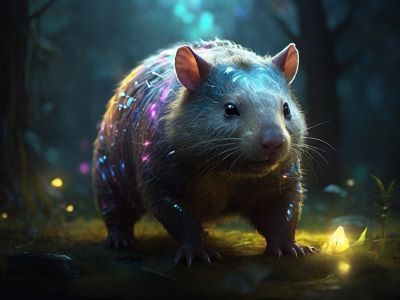
The Platypus, a unique monotreme, fascinates with its blend of mammalian and avian features, such as laying eggs despite being a mammal. Its electrolocation ability to detect prey under the water surface without using sight or sound is a marvel of nature, symbolizing intuition and the importance of trusting one’s inner instincts. It’s said that the platypus encourages individuals to embrace their uniqueness and rely on their intuition, making it a quirky yet beloved symbol of good luck in Australian folklore.

African Good Luck Animals
The only thing left to figure out is what animal means good luck on the African continent.
The Elephant is a powerful symbol of strength, wisdom, and longevity in many African cultures. It’s revered for its intelligence and memory, qualities that are admired and respected by people. In addition to symbolizing prosperity, elephants are often associated with leadership and royalty. They are considered sacred in some cultures and are believed to bring rain and fertility to the land. Stories and legends often depict elephants as protective forces that bring good luck to communities. Many African stories feature elephants as wise and benevolent beings that aid heroes, offer sage advice, and possess the power to remove obstacles from one’s path. Their appearance in dreams is typically interpreted as a sign of impending good fortune.
The Giraffe, with its long neck reaching towards the sky, is a symbol of foresight, grace, and the ability to see above and beyond the mundane. It represents the ability to achieve high goals and maintain a broad perspective. Giraffes are admired for their gentle demeanor and the unique pattern of their coats, which is seen as a sign of individuality. In some cultures, the giraffe’s ability to eat leaves from tall trees is seen as a metaphor for accessing higher knowledge and spiritual insights. Giraffes are often depicted as creatures that can bridge earthly concerns with heavenly aspirations. Their calm and serene presence in storytelling often brings messages of hope, encouraging individuals to look over and beyond their immediate troubles.
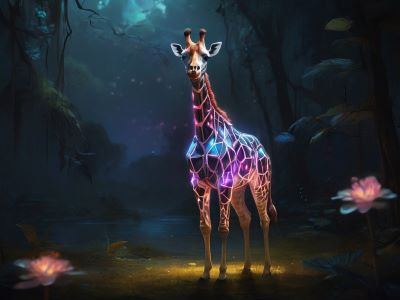
Meerkats symbolize social connectivity, vigilance, and cooperation. Their alert stance and group dynamics reflect the importance of community and mutual support. In African traditions, meerkats are celebrated for their communal living and the ability to work together for the benefit of the group. They are seen as protectors of the family and home, warding off dangers through their keen senses and collaborative nature. Tales often feature meerkats as clever and resourceful animals that use their wits to outsmart larger predators and overcome challenges. Their presence is believed to encourage teamwork and alertness, qualities essential for navigating life’s difficulties.

Animal for Good Luck in Gambling
Whether it’s the thrill of the casino floor or a quiet bet among friends, these creatures are believed to bring good fortune to those who seek their favor. Below, explore a list of five animals revered for their supposed ability to tip the odds in favor of those who honor them:
Elephants: In many parts of the world, elephants are considered majestic creatures that symbolize good luck and wisdom. Having an elephant figurine or a picture near you while gambling is thought to attract positive energy and prosperity.
Cats: Specifically, the Maneki-neko, or the “beckoning cat” from Japanese culture, is believed to invite good luck, fortune, and customers. A figurine of this smiling cat is often placed in businesses and homes, and carrying a small token of it can supposedly bring luck in gambling endeavors.
Rabbits: The rabbit’s foot has been a longstanding symbol of good luck in various cultures, particularly in North America. Carrying a rabbit’s foot while gambling is thought to offer protection and fortune to its holder.
Goldfish: In Chinese and Japanese tradition, goldfish are considered bringers of good luck and prosperity. Their association with abundance and wealth makes them a favored symbol among gamblers, hoping to draw a similar abundance to their endeavors.
Frogs: The three-legged frog, or “Chan Chu” in Chinese culture, is often seen as a magnet for wealth and prosperity. This mythical creature is believed to attract and protect wealth, making it a popular talisman among those seeking luck in gambling.
How Good Luck Animals Can Help with Gambling
The incorporation of animals believed to carry good fortune into the gambling scene profoundly impacts the psychological demeanor of gamblers. Symbols like the rabbit’s foot, associated with luck, or elephants, heralded for prosperity, catalyze a phenomenon known as magical thinking within individuals. This not only imbues gamblers with an increased level of optimism regarding their prospects of victory but also diminishes the stress and apprehension associated with the unpredictable nature of gambling. This reliance on emblematic animals fosters a positive outlook, helping players to stay focused and resilient, even when faced with setbacks. Although the effectiveness of these symbols in influencing the outcomes of gambling ventures remains within the realm of superstition, their ability to alter the gambler’s mindset and behavior underscores the intriguing relationship between belief systems and psychological health in the context of gambling.
Famous Good Luck Animals
While the animal kingdom is rich with symbols of fortune, some creatures have risen to fame, becoming icons of luck through extraordinary circumstances or remarkable stories. These are not your everyday symbols; they are real animals whose actions or very presence have turned them into legends, especially in the realm of sports and public events.
Maggie the Monkey: Hockey’s most famous fortune-teller, Maggie, a macaque, gained celebrity status in Canada for her uncanny ability to predict the winners of NHL playoff series. Her selections, made live on television, not only endeared her to fans but also sparked debates about the role of superstition in sports.

Paul the Octopus: Perhaps the most celebrated animal oracle, Paul the Octopus was famed for predicting the outcomes of matches during the 2010 FIFA World Cup. Housed in a tank at a sea life center in Germany, Paul chose between two boxes containing food, each marked with the flag of a competing nation. His predictions were correct for all of Germany’s matches and the final, earning him global acclaim and a spot in football folklore.
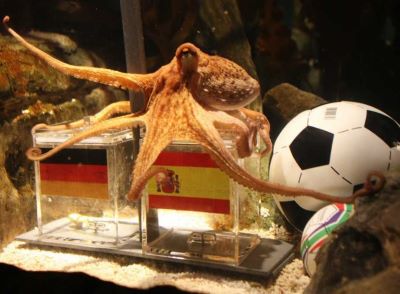
Larry the Lucky Lobster: Larry shot to fame during the annual Lobster Festival in Maine, USA, when he was unexpectedly spared from the pot due to his unusual size and color, leading locals to deem him a bringer of good luck. Since then, Larry’s legend has grown, with many attributing a streak of good weather and successful festivals to his fortunate aura.
Bad Luck Animals
In the realm of superstitions and folklore, not all animals are harbingers of good fortune; some are believed to bring misfortune or bad luck. This belief varies greatly across cultures, with specific animals embodying negative omens or warnings.
One such creature is the black cat, which, in many Western cultures, is often associated with witchcraft and bad luck, especially if one crosses your path. Contrary to this, in British and Japanese cultures, black cats are seen as symbols of good luck, showcasing how interpretations can vary widely.
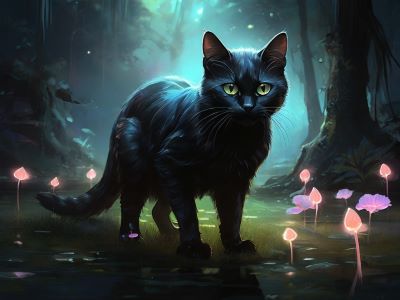
Another animal steeped in superstition is the owl, particularly in parts of Eastern Europe, where it is considered a harbinger of death or ill health. The eerie calls of owls in the dead of night have been linked with the idea that they can foresee impending doom.
The crow has a dark association in many cultures. In Native American lore, crows are seen as symbols of death or trickery, and in many Western societies, a group of crows, known as a “murder,” is often considered an omen of bad news or death approaching. This complex symbolism reflects the crow’s intelligence and adaptability, characteristics that have led to various interpretations of their presence.
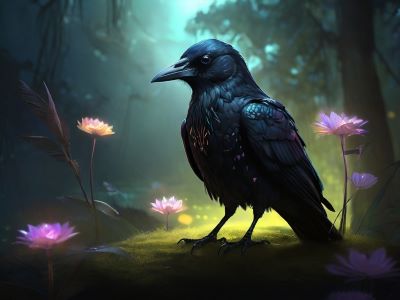
Our thoughts
Exploring the idea of animals as carriers of good luck has taken us across a vast array of cultures and traditions, where animals are more than just fauna; they are symbols of fortune, protection, and prosperity. If the concept of lucky animals resonates with you, there’s no harm in incorporating this belief into your life. However, it’s crucial to remember that your fate lies in your own hands, shaped by the decisions you make. At the same time, it’s important to treat these animals with respect and care, acknowledging their role in our world goes beyond mere symbols. They are part of our ecosystem, and their wellbeing is essential for maintaining the balance of our natural environment.
